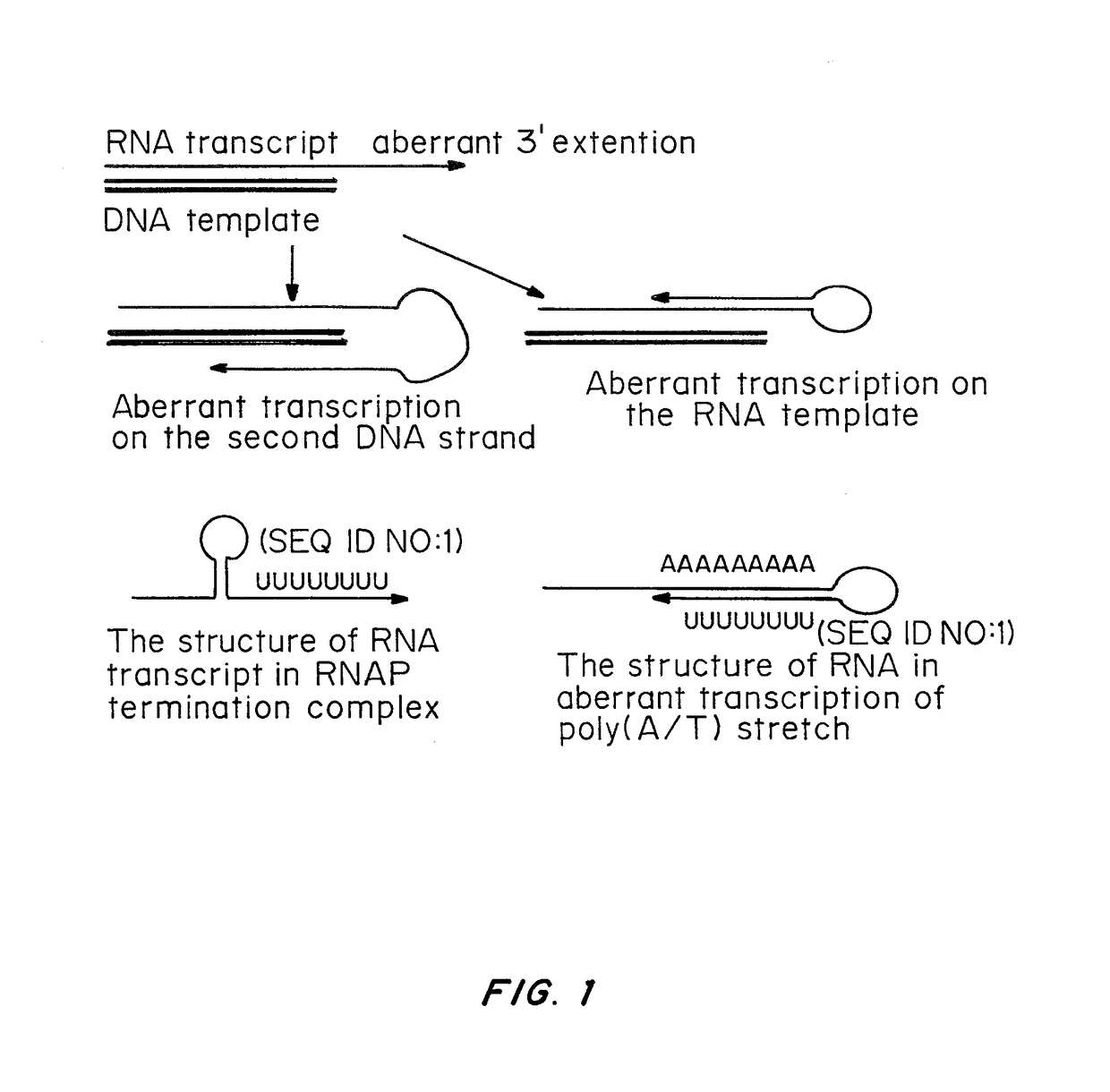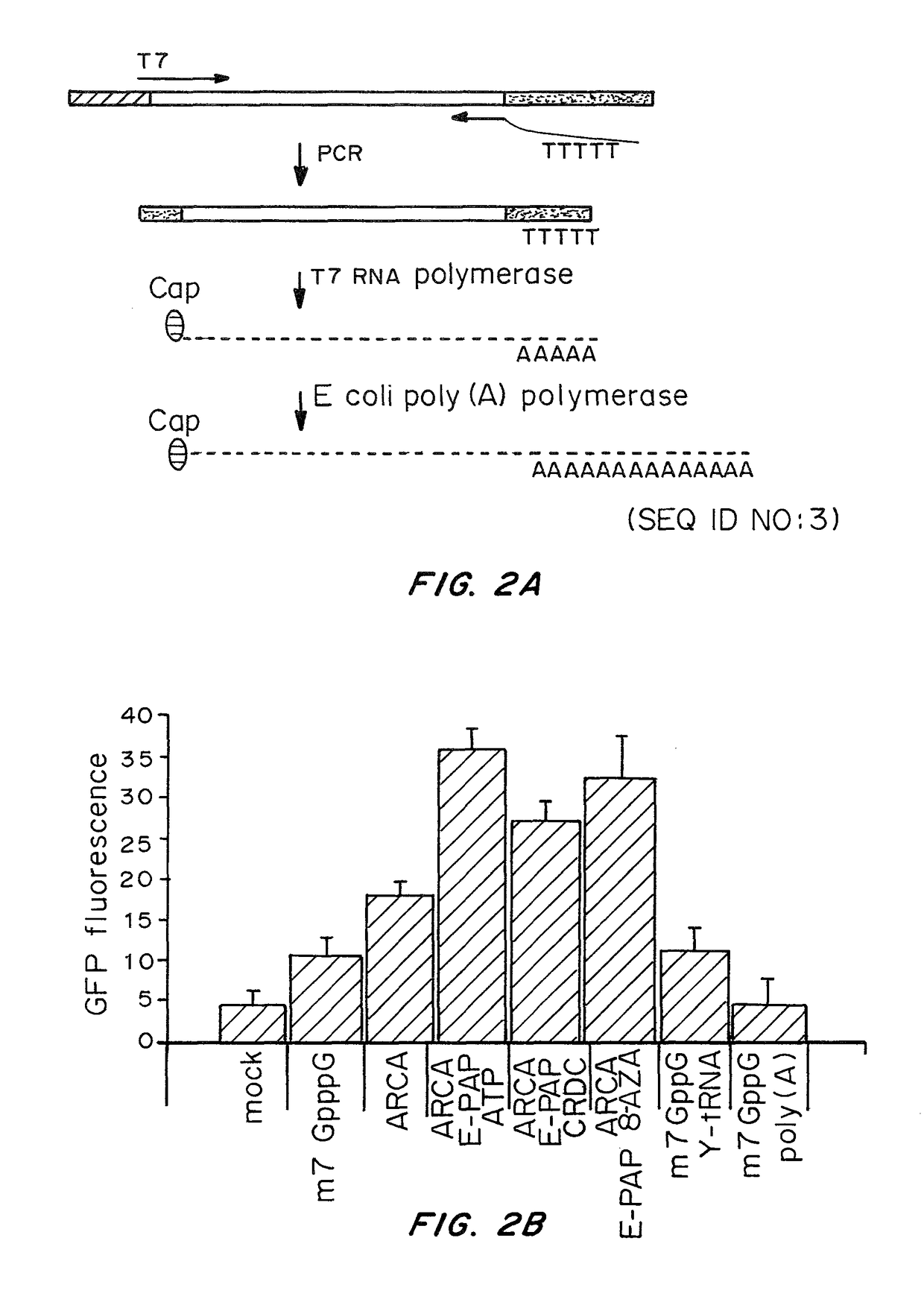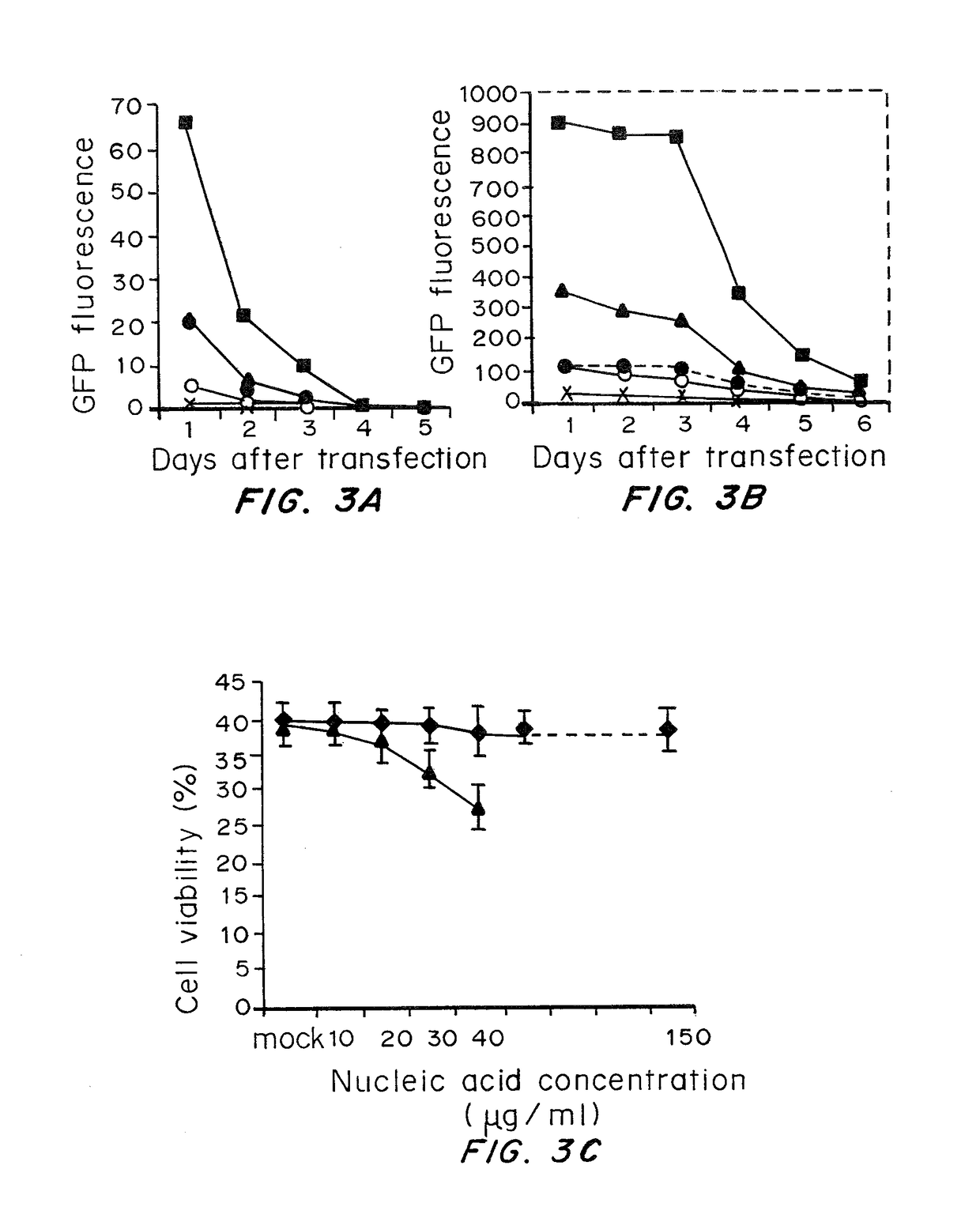Cells prepared by transient transfection and methods of use thereof
a technology of transient transfection and cell, applied in the direction of genetically modified cells, skeletal/connective tissue cells, antibody medical ingredients, etc., can solve the problems of increasing the toxicity of treatment, difficult to achieve especially from some patients, and not controlling the in vivo proliferation of t cells, etc., to improve survival and metabolic stability, avoid the effect of toxicity
- Summary
- Abstract
- Description
- Claims
- Application Information
AI Technical Summary
Benefits of technology
Problems solved by technology
Method used
Image
Examples
example 1
RNA Transfection in EML Cells
[0278]EML cells are a murine cell line that grows in suspension and has the capacity to differentiate into cells of several hematopoietic lineage in vitro. These cells would be of considerable interest for manipulation in vitro, but, unfortunately, they are relatively resistant to standard transfection methods. EML cells were therefore used as a model for exploring various DNA and RNA transfection methods with difficult cells. For convenience of assaying, a DNA plasmid expressing green fluorescent protein (GFP) was used. The following transfection methods were tested: LIPOFECTIN® and LIPOFECTAMIN® lipofection, electroporation using square wave BTX ECM 830 apparatus or BioRad Gene Pulser II, exponential diminishing wave electroporation using Eppendorf Multiporator, and also Amaxa nucleofector. All methods were optimized according to the recommendations of the manufacturers. The Amaxa nucleofection protocol gave the highest efficiency of transfection. The ...
example 2
Transfection of Human Primary T Lymphocytes
[0295]The method of GFP mRNA synthesis was used to produce the mRNA of the human chimeric anti-CD19 receptor. This receptor contains a leader sequence, an antiCD19 single strand antibody domain, a transmembrane domain and two intracellular signal transduction domains: a 4-1BB and a CD3 zeta, as shown in FIG. 4. Cloned in the appropriate integrative DNA vector, the receptor is able to redirect transfected CD8+ lymphocytes as well as natural killer cells toward the CD19+ targets (Imai at al., Leukemia, 18, 676-684 (2004); Imai et al., Blood, 106:376-383 (2005). The plasmid pMSCV-IRES-antiCD19-BB-zeta was used as a template to produce the receptor mRNA. The product included the coding sequence, the 50 b 5′UTP, and the 84 b 3′UTP with an extended 400b polyA tail.
[0296]Jurkat cells transfected with this mRNA expressed receptor on their surface. Simultaneous transfection of the cells with the receptor and GFP mRNAs showed that both mRNAs can be d...
example 3
Transfection of CD3+ T Lymphocytes with Anti-CD19-CAR mRNA
[0298]Cells were transfected with anti-CD19-CAR mRNA (40 μg / ml) and analyzed by FACS. Cells were labeled with antibody able to detect surface expression of anti-CD19-CAR, CD8, and CD4. Anti-CD19-CAR expression efficiency was calculated as the difference between geometric means of fluorescence of the transfectants and control (mock-transfected) cells. The fluorescence value of mock-transfected cells was measured as approximately 3 units (negative control). Therefore 63 units of total fluorescence corresponded to a 60-unit increase in fluorescence relative to the control. Both the CD4+ and CD8+ subpopulations were equally transfectable, possessed the same pattern of mRNA expression, and were able to sustain anti-CD19-CAR expression for at least 3 days (FIG. 5).
PUM
| Property | Measurement | Unit |
|---|---|---|
| time | aaaaa | aaaaa |
| concentrations | aaaaa | aaaaa |
| time | aaaaa | aaaaa |
Abstract
Description
Claims
Application Information
 Login to View More
Login to View More - R&D
- Intellectual Property
- Life Sciences
- Materials
- Tech Scout
- Unparalleled Data Quality
- Higher Quality Content
- 60% Fewer Hallucinations
Browse by: Latest US Patents, China's latest patents, Technical Efficacy Thesaurus, Application Domain, Technology Topic, Popular Technical Reports.
© 2025 PatSnap. All rights reserved.Legal|Privacy policy|Modern Slavery Act Transparency Statement|Sitemap|About US| Contact US: help@patsnap.com



